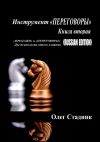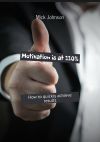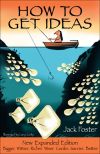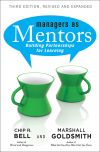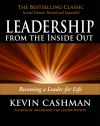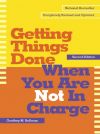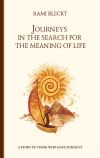Правообладателям!
Представленный фрагмент книги размещен по согласованию с распространителем легального контента ООО "ЛитРес" (не более 20% исходного текста). Если вы считаете, что размещение материала нарушает ваши или чьи-либо права, то сообщите нам об этом.Читателям!
Оплатили, но не знаете что делать дальше?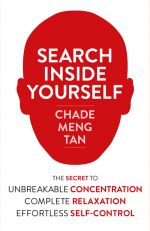
Текст бизнес-книги "Search Inside Yourself: Increase Productivity, Creativity and Happiness [ePub edition]"
Автор книги: Jennie Miller
Раздел: Жанр неизвестен
Текущая страница: 1 (всего у книги 2 страниц)

Dedication
Once upon a time, there was a world-renowned expert in emotional intelligence who was also a very talented writer. He was encouraged by his friend to write a book on mindfulness and emotional intelligence. He felt inspired to do so but could never find the time. So the friend wrote the book instead. I am that friend, and this is the book.
Thank you, Danny, for trusting me to write this book.
Contents
Cover
Title Page
Dedication
Foreword by Daniel Goleman
Foreword by Jon Kabat-Zinn
Introduction: Searching Inside Yourself
Chapter One: Even an Engineer Can Thrive on Emotional Intelligence
Chapter Two: Breathing as if Your Life Depends on It
Chapter Three: Mindfulness Without Butt on Cushion
Chapter Four: All-Natural, Organic Self-Confidence
Chapter Five: Riding Your Emotions like a Horse
Chapter Six: Making Profits, Rowing Across Oceans, and Changing the World
Chapter Seven: Empathy and the Monkey Business of Brain Tangos
Chapter Eight: Being Effective and Loved at the Same Time
Chapter Nine: Three Easy Steps to World Peace
Epilogue: Save the World in Your Free Time
Acknowledgments
Notes
Recommended Reading and Resources
Index
Praise for Search Inside Yourself
Copyright
About the Publisher
Foreword Daniel Goleman
My first impression of Google was shaped by Chade-Meng Tan, widely known as Meng. Meng is the company’s unofficial greeter, its irrepressible jolly good fellow (“which nobody can deny,” as his business card puts it).
As I’ve gotten to know him, I have realized that Meng is someone special. One tip-off came as I went by his office and saw the bulletin board on the wall near his door: row after row of Meng in snapshots with the world’s bold-face names. Meng with Al Gore. Meng with the Dalai Lama. And with Muhammad Ali and with Gwyneth Paltrow. Later I learned, via a front-page article in the New York Times, that Meng was famous as “that Google guy,” the singular engineer with high enough social intelligence to make any visitor feel right at home—and pose for a photo with him.
But that’s not what makes Meng so special. Rather, it is Meng’s magical combination of brilliant systems analysis with a heart of gold.
First, the analysis.
I had come to give a talk on emotional intelligence as part of the Authors@Google lecture series. I felt a bit like yet another of the endless perks employees there famously enjoy, somewhere between a massage and all the soda you can drink.
In this bastion of the intellect—after all, you need top SAT scores just to be considered for a job at Google—I anticipated that lecture with some trepidation about anyone in this hardheaded information engineering company being much interested in hearing about soft skills. So I was amazed on arriving at the room where I was to speak, the largest venue in that part of the Googleplex, to find the place overflowing, with throngs spilling into the hall. There was clearly high interest.
At Google I was talking to perhaps the highest-IQ audience I’d ever addressed. But among all those big brains who heard me that day, it was Meng who had the smarts to reverse engineer emotional intelligence. Meng picked it apart and put it back together again with a brilliant insight: he saw that knowing yourself lies at the core of emotional intelligence, and that the best mental app for this can be found in the mind-training method called mindfulness.
That insight underlies the program Meng has developed. When he unveiled the course at Google University, it was called (fittingly for a company all about web search) Search Inside Yourself. As you’ll read here, many who have taken the course at Google have found it to be a transformative experience.
Meng was also savvy in choosing his collaborators, like Zen teacher Norman Fischer, and my longtime friend and colleague Mirabai Bush, founding director of the Center for Contemplative Mind in Society. And Meng has drawn on the expertise of another old friend, Jon Kabat-Zinn, who pioneered the use of mindfulness in medical settings throughout the world. Meng knows quality. He didn’t stop there. Meng and this team also cherry-picked the best from well-tested methods for creating a life with self-awareness and well-being, kindness, and happiness.
Now for that heart of gold.
When Meng saw that this inner search had such benefits, his instinct was to share it with anyone who might want to give it a try—not just those lucky enough to have access to a Google course. In fact, the very first time I met Meng, he was passionate in telling me that his life goal was to bring world peace through spreading inner peace and compassion. (Meng’s enthusiasm for this goal, I noticed a bit uneasily, seemed to inspire him to a level of vociferousness.)
His vision, detailed in this highly enjoyable account, entails beta testing a mindfulness-based emotional intelligence curriculum at Google and then offering it to anyone who might benefit—as he puts it, “give it away as one of Google’s gifts to the world.”
As I’ve gotten to know Meng better, I have come to realize that he is not your average engineer; he’s a closet Bodhisattva. And with this book, I’d drop the “closet” part.
–Daniel Goleman
Foreword Jon Kabat-Zinn
When I first met Meng, I thought to myself: “Who is this guy, who calls himself the jolly good fellow of Google?” (It is on his business card, along with the rubric “which nobody can deny.”)
Meng had invited me to give a tech talk on the subject of mindfulness at Google. Within a few seconds of my arrival, he was talking to me about mindfulness and world peace, while making one joke after another. His sense of humor was a bit bewildering. Meng proceeded to take me on a tour. The first stop was his photo board in the lobby of the main building of the Googleplex . . . photos of himself together with pretty much every famous and powerful person in the world. “Who is this guy who welcomes all these heads of state, Nobel laureates, and celebrities to Google? And can I take him seriously? Can I believe everything he is telling me?”
He was telling me a lot, including that his ultimate aim was to create the conditions for world peace in his lifetime and that he felt the way to do that was to make the benefits of meditation accessible to humanity. And that Google could play a special role, being Google.
You can imagine what was going on in my head: “Google, the quintessence of universal accessibility (except in countries that try to block or regulate access to it), is interested in playing such a role in the world!? Or at least, one visionary person at Google. Amazing. Maybe he is feigning craziness and is really the one sane person around. Because he is employee number 107, he must be very good at what he was originally hired to do; that’s obvious. I doubt it was just to be a jolly good fellow while everybody else was working on writing code for the next next thing.”
These were the kinds of thoughts that were going through my mind at the time of my first visit. If Meng was serious about this, beyond all the humor, the potential impact and import struck me as boundless. I was duly impressed by the graphical display he pointed out in the main lobby, which showed a rotating globe with colored lights streaming into the blackness of space from everywhere on Earth where Google searches were being conducted at that moment. The different colors represented the different languages being used, and the lengths of the lines of light were proportional to the number of searches being conducted from that part of the world. Meanwhile, the subjects of all those searches were streaming down another big screen. Together, these displays imparted a moving and very visceral sense of the interconnectedness of our world—akin to the emotional impact of seeing for the first time the image of Earth in the blackness of space, taken from the moon. They also conveyed, to use Google-speak, the power of search—and the power of Google.
I won’t tell you about the talks I wound up giving at Google or about my colleagues, who Meng talks about in the book, who also gave lectures in that series. They are all on YouTube, which is part of Google. And I won’t tell you about the mindfulness-based stress reduction (MBSR) classes at Google that Meng instituted there and that have been ongoing now for years. Nor will I tell you about the mindfulness-based emotional intelligence program, Search Inside Yourself, that Meng developed in parallel, with a team of remarkable people who originally came to visit because it was Google and because he was Meng. That is what this book is about.
What I would like to tell you about is what I discovered about Meng from reading this book, and what you might want to keep in mind as you make your way through it—because this is not simply a book but also a curriculum, a pathway you can follow with specific exercises and guidance, a meditative approach to relating to others and to yourself that, if you engage in it systematically, is profoundly transformative and freeing—and also hopefully fun. In fact, if you discover, after giving it a fair try, that it is not fun or doesn’t at least give you a sense of being personally compelling and potentially nurturing of what is deepest and best in yourself, perhaps it is not the right moment for you to undertake the entirety of the Search Inside Yourself program. But the seeds will inexorably have been planted just by reading the book and playing around with the exercises in whatever ways make sense to you at the moment, an open-ended experiment and adventure in mental and emotional fitness and its applications in your life, and in your work and calling.
What I discovered, and you will too, is that, all kidding aside, Meng is a very serious guy, and he is absolutely committed, as you will soon see, to mindfulness, creating the conditions for world peace, and making peacefulness the default mode on this planet, at least among the human species. And he is serious about using the platform and the power of Google to make it happen. I am guessing that was his strategy from the very beginning, in inviting meditation teachers, Buddhist scholars, and scientists who were studying contemplative practices from both the clinical and neuroscientific perspectives, and their applications in the fields of medicine and health, education, and beyond to give these talks at Google. It was a way of setting the stage for his plan to tip the world in the direction of peace. First Google, then the world.
I get the sense that Meng is so serious about his vision that he knows that taking something as important as mindfulness and its potential to transform the world too seriously would not necessarily be a good thing. So he leavens it with humor that is deadly (or maybe I should say “alively”) serious. Meng’s sense of humor may be an acquired taste, but I think that in reading the book, you, the reader, will quickly acquire that taste, and along with it and much more importantly, a taste for what it is pointing to, a taste of your own deep interior resources for acting in your own best interest by realizing that your interest is best served by recognizing and nurturing the interests of others at the same time.
This is what mindfulness-based emotional intelligence is all about. This is why it is so important, in so many ways, to literally and metaphorically search inside yourself. What is here to be discovered, or uncovered, is the full spectrum of who you already are as a person and the realization of how embedded you are in the multidimensional warp and woof of humanity and all life. And because mindfulness is not about getting someplace else—but rather about being fully where you already are and realizing the power of your full presence and awareness right now, in this moment—Meng’s program is really about finding rather than searching. It is about dis-covering, re-covering, and un-covering that full dimensionality of your being that is already yours and then developing and refining it through systematic cultivation and practice. From there, in combination with what you most love and with your imagination and innate creativity, it is bound to manifest in the world in any number of hopefully skillful ways, in the service of our mutual well-being and happiness.
If this sounds like a utopia, it isn’t. But if it sounds like a practical strategy for a more peaceful world, inwardly and outwardly, individually and collectively, locally and globally—well, it is. And that is exactly how Meng intends to play it. Having developed this program at Google and road tested it in that workplace environment, he is now ready, with this book and what will follow from it, to make the program available to the world in the spirit of open sourceware.
The curriculum of Search Inside Yourself is free. It can be used in many ways, in many venues, as you will see for yourself. The limits of its usefulness or adaptability are really only the limits of your imagination and embodiment. The Search Inside Yourself curriculum rests on an ocean of meditative wisdom practices that cultivate mindfulness, loving kindness, compassion, joy, equanimity, embodied presence, emotional intelligence, and many other fundamental aspects of our minds and hearts and bodies that are also available to you once you enter through this portal. As Meng makes abundantly clear, his aim is to “make the benefits of meditation accessible to humanity” and as accepted in the mainstream as the lifelong benefits of exercise. And, even more importantly, to ensure, to whatever degree possible, that they are implemented, lived, and enacted by each of us who might be touched by this invitation to search inside ourselves.
To this end, Meng has laid out a well-designed and well-tested pathway for the development and application of emotional intelligence in the workplace and at home. It is founded on cutting-edge science and the well-established track record of research in emotions and emotional intelligence, the importance of optimism, and the power of compassion and kindness as well as the growing neuroscientific study of mindfulness and compassion. This research is showing that significant benefits of meditation can be observed after only eight weeks of training. Richie Davidson and I did a study with a number of our colleagues showing that people in a work setting who practiced mindfulness in the form of MBSR for eight weeks showed a shift in their emotional set point in the prefrontal cortex in a direction of greater emotional intelligence, and in the same direction as monks who had practiced for over ten thousand hours—evidence that you don’t have to become a monastic, or quit your job, or abandon your family to benefit from meditation. In fact, work and family are perfect environments for working with your own mind and body, cognitions, and emotions in the ways Meng describes here. Before that study was done, it was generally thought that one’s emotional set point was fixed before adulthood and could not be changed. Our results showed that the brain responds to this kind of meditative training by reorganizing its activity in the direction of greater emotional balance. Other studies have shown that the brain reorganizes its very structure as well, an example of the phenomenon known as neuroplasticity.
It turns out that Meng is indeed a unique and skillful, if way out-of-the-box, meditation teacher, as depicted in the tongue-in-cheek cartoons. He is the first to say that he learned it all from others. He certainly has great teachers and collaborators in the form of Dan Goleman, Mirabai Bush, Norman Fischer, and others. But Meng himself puts it all together here in a very effective way and documents his sources assiduously. If Search Inside Yourself is a bit light on the time recommended for the actual formal meditation practices, that is by design. Once one has tasted the practice for oneself, the motivation is very likely to be there to extend the time of formal practice, not to achieve a special state, but to simply rest in awareness itself, outside of time altogether. This is the practice of non-doing, of openhearted presencing, of pure awareness, coextensive with and inseparable from compassion. It is not an escape from life. On the contrary, the practice of mindfulness is a gateway into the experience of interconnectedness and interdependence out of which stem emotionally intelligent actions, new ways of being, and ultimately greater happiness, clarity, wisdom, and kindness—at work and in the world. One small shift in the way we each conduct ourselves, and the crystal lattice structure of the world is already different. In this way, we are the world, and when we take responsibility for our small but not insignificant part of it, the whole is already different—the flowering we manifest emotionally and in every other way of some importance, potentially enormous.
I wish you well in entering Meng’s world and Meng’s mind, and more importantly, in discovering your own mind and heart and body and relationships, perhaps in new and undreamed-of ways. May your adventure here be deeply nurturing. And may it bring peace—inwardly and in every other way.
–Jon Kabat-Zinn
Introduction

Searching Inside Yourself
Look within; within is the fountain of all good.
–Marcus Aurelius
What does the happiest man in the world look like? He certainly does not look like me. In fact, he looks like a bald French guy in Tibetan robes. His name is Matthieu Ricard.
Matthieu was born and grew up in France. In 1972, after completing his Ph.D. in molecular genetics at the Institut Pasteur, he decided to become a Tibetan Buddhist monk. I tell him that the reason he became a monk is because he could not join Google back in 1972—and the monk thing seemed like the next best career choice.
Matthieu’s career choice leads us to the story of how Matthieu became the “happiest man in the world.” When the Dalai Lama became interested in the science of meditation, he invited Tibetan Buddhist monks to participate in scientific studies. Matthieu was an obvious choice as a subject, as he was a bona fide scientist, understood both Western and Tibetan ways of thinking, and had decades of classical meditation training. Matthieu’s brain became the subject of numerous scientific studies.1
One of many measurements conducted on Matthieu was his level of happiness. There turns out to be a way to gauge happiness in the brain: by measuring the relative activation of a certain part of your left prefrontal cortex versus your right prefrontal cortex.2 The stronger the relative left-tilt is measured in a person, the more that person reports positive emotions, such as joy, enthusiasm, high energy, and so on. The reverse is also true; those with higher activity on the right report negative emotions. When Matthieu’s brain was scanned, his happiness measure was completely off the charts. He was, by far, the happiest person ever measured by science. Pretty soon, the popular media started nicknaming him the “happiest man in the world.” Matthieu himself is a little annoyed by that nickname, which creates an element of humorous irony.
Extreme happiness is not the only cool feat Matthieu’s brain can pull off. He became the first person known to science able to inhibit the body’s natural startle reflex—quick facial muscle spasms in response to loud, sudden noises. Like all reflexes, this one is supposed to be outside the realm of voluntary control, but Matthieu can control it in meditation. Matthieu also turns out to be an expert at detecting fleeting facial expression of emotions known as microexpressions. It is possible to train people to detect and read microexpressions, but Matthieu and one other meditator, both untrained, were measured in the lab and performed two standard deviations better than the norm, outperforming all the trained professionals.
The stories of Matthieu and other masters of contemplative practices are deeply inspiring. These masters demonstrate that each of us can develop an extraordinarily capable mind that is, first and foremost, profoundly peaceful, happy, and compassionate.
The methods for developing such an extraordinarily capable mind are accessible even to you and me. That’s what this book is about.
In Google, the effort to make these methods widely accessible began when we asked ourselves this question: what if people can also use contemplative practices to help them succeed in life and at work? In other words, what if contemplative practices can be made beneficial both to people’s careers and to business bottom lines? Anything that is both good for people and good for business will spread widely. If we can make this work, people around the world can become more successful at achieving their goals. I believe the skills offered here will help create greater peace and happiness in your life and the lives of those around you, and that peace and happiness can ultimately spread around the world.
To promote innovation, Google generously allows its engineers to spend 20 percent of their time working on projects outside their core jobs. A group of us used our “20 percent time” to work on what became Search Inside Yourself. We ended up creating a mindfulness-based emotional intelligence curriculum with the help of a very diverse group of extremely talented people, including a Zen master, a CEO, a Stanford University scientist, and Daniel Goleman, the guy who literally wrote the book on emotional intelligence. It sounds almost like the prelude to a good joke (“A Zen master and a CEO walked into a room . . .”).
The name of the mindfulness-based emotional intelligence curriculum is Search Inside Yourself. Like many things in Google, that name started as a joke but finally stuck. I eventually became the first engineer in Google’s history to leave the engineering department and join People Ops (what we call our human resources function) to manage this and other personal-growth programs. I am amused that Google lets an engineer teach emotional intelligence. What a company.
There turned out to be unexpected benefits to having an engineer like me teach a course like Search Inside Yourself. First, being very skeptical and scientifically minded, I would be deeply embarrassed to teach anything without a strong scientific basis, so Search Inside Yourself was solidly grounded in science. Second, having had a long career as an early engineer at Google, I had credible experience in applying emotional intelligence practices in my day job as I created products, managed teams, asked the boss for raises, and stuff. Hence, Search Inside Yourself had been stress-tested and applicable in daily life right out of the box. Third, my engineering-oriented brain helped me translate teachings from the language of contemplative traditions into language that compulsively pragmatic people like me can process. For example, where traditional contemplatives would talk about “deeper awareness of emotion,” I would say “perceiving the process of emotion at a higher resolution,” then further explaining it as the ability to perceive an emotion the moment it is arising, the moment it is ceasing, and all the subtle changes in between.
That is why Search Inside Yourself has the compelling features of being scientifically grounded, highly practical, and expressed in a language that even I can understand. See? I knew my engineering degree was good for something.
Search Inside Yourself has been taught at Google since 2007. For many participants, it has been life changing, both at work and in their personal lives. We receive a lot of post-course feedback similar to one that says, “I know this sounds melodramatic, but I really think this course changed my life.”
At work, some participants have found new meaning and fulfillment in their jobs (we even had one person reverse her decision to leave Google after taking Search Inside Yourself!), while some have become much better at what they do. Engineering manager Bill Duane, for example, discovered the importance of giving himself quality time, so he reduced his working hours to four days a week. After he did that, he was promoted. Bill found time to take care of himself and discovered ways to accomplish more while doing less. I asked Bill about the most significant changes he experienced during Search Inside Yourself, and he said he learned to listen a lot better, gain control over his temper, and understand every situation better by, in his words, “learning to discern stories from reality.” All these make him a much more effective manager to the benefit of the people working for him.
For Blaise Pabon, a sales engineer, Search Inside Yourself helped him become much more credible to customers because he is now better at calmly overcoming objections during product demonstrations, he speaks compassionately about competitors, and he is courageous and truthful when telling customers about our products. All these qualities earned him great respect among his customers. One engineer in the class found himself becoming much more creative after Search Inside Yourself. Another engineer told us that two of his most important contributions to his project came after doing mindfulness exercises he learned in Search Inside Yourself.
Not surprisingly, people found Search Inside Yourself to be even more beneficial in their personal lives. Many reported becoming significantly calmer and happier. For example, one participant said, “I have completely changed in the way I react to stressors. I take the time to think through things and empathize with other people’s situations before jumping to conclusions. I love the new me!” Some have found the quality of their marriages improved. Others reported overcoming personal crises with the help of Search Inside Yourself. For example, one person told us, “I experienced personal tragedy—my brother’s death—during the course of Search Inside Yourself, and [the class] enabled me to manage my grief in a positive way.” One person simply said, “I now see myself and the world through a kinder, more understanding set of eyes.”
This book is based on the Search Inside Yourself curriculum at Google. We saw how this knowledge and the practices enhanced creativity, productivity, and happiness in those who took the course. You will find many things in this book that are very useful for you, and some things that may even surprise you. For example, you will learn how to calm your mind on demand. Your concentration and creativity will improve. You will perceive your mental and emotional processes with increasing clarity. You will discover that self-confidence is something that can arise naturally in a trained mind. You will learn to uncover your ideal future and develop the optimism and resilience necessary to thrive. You will find that you can deliberately improve empathy with practice. You will learn that social skills are highly trainable and that you can help others love you.
What I find most rewarding is how well Search Inside Yourself has worked for ordinary folks in a corporate setting right here in a modern society. If Search Inside Yourself had worked this well for people from traditionally meditative cultures doing intensive retreats in zendos or something, nobody would be too surprised. But these are ordinary Americans working in a high-stress environment with real lives and families and everything, and still, they can change their lives in just twenty hours of classroom time spread over seven weeks.
Search Inside Yourself works in three steps:
1. Attention training
2. Self-knowledge and self-mastery
3. Creating useful mental habits
Attention Training
Attention is the basis of all higher cognitive and emotional abilities. Therefore, any curriculum for training emotional intelligence has to begin with attention training. The idea is to train attention to create a quality of mind that is calm and clear at the same time. That quality of mind forms the foundation for emotional intelligence.
Self-Knowledge and Self-Mastery
Use your trained attention to create high-resolution perception into your own cognitive and emotive processes. With that, you become able to observe your thought stream and the process of emotion with high clarity, and to do so objectively from a third-person perspective. Once you can do that, you create the type of deep self-knowledge that eventually enables self-mastery.
Creating Useful Mental Habits
Imagine whenever you meet anybody, your habitual, instinctive first thought is, I wish for this person to be happy. Having such habits changes everything at work, because this sincere goodwill is picked up unconsciously by others, and you create the type of trust that leads to highly productive collaborations. Such habits can be volitionally trained.
In creating Search Inside Yourself, we collected some of the best scientific data and gathered some of the best minds on the topic to create a curriculum that is proven to work. You will not want to miss this; it may change your life.
I am confident that this book will be a valuable resource for you as you embark on your exciting journey. I hope your journey will be fun and profitable. And, yes, that it will contribute to world peace too.
Правообладателям!
Представленный фрагмент книги размещен по согласованию с распространителем легального контента ООО "ЛитРес" (не более 20% исходного текста). Если вы считаете, что размещение материала нарушает ваши или чьи-либо права, то сообщите нам об этом.Читателям!
Оплатили, но не знаете что делать дальше?
